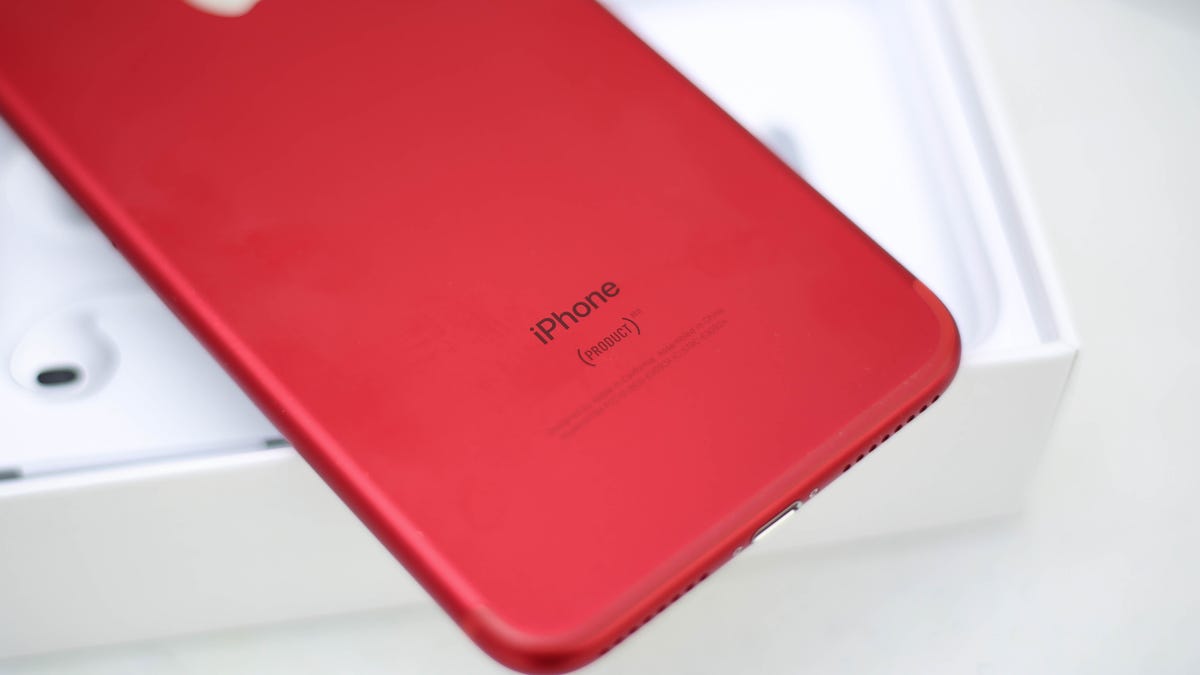Apple earnings are coming, but how about that iPhone 8?
The company is expected to post a modest increase in sales in its fiscal second quarter, but all eyes are already looking ahead.

A year ago, Apple's iPhone sales dropped for the first time and everyone freaked out.
This year, no matter what, people will likely shrug as they await the debut of the next iPhone.
For the record, Wall Street is looking for a slight rebound when Apple reports its fiscal second-quarter results Tuesday. Estimates call for iPhone sales to rise a tick, to 52.2 million from 51.2 million a year ago, according to investment firm Stifel Nicolaus. Revenue also is expected to increase in the fiscal quarter, which ended in late March, but not with the big jump that Apple's reported in the past.
It was the second full quarter of iPhone 7 sales, and no one's anticipating either a blowout or disaster. Normally, analysts don't start looking ahead until the quarter that ends in late June, the last full period before a new model is released. That's because Apple typically unveils its new iPhones at the start of September and starts selling them later in the month.
But this year -- the 10-year anniversary of the first iPhone -- is different.
Already, analysts and other market watchers are looking to that next model instead of worrying about last quarter's results. The iPhone 8 (or whatever it'll be called) already has sky-high expectations built in. That leaves little room to worry about current results.
"Most investors are focused on [fiscal 2018], which means the next few reports should be less important than usual," UBS analyst Steven Milunovich noted.
Apple didn't have a comment ahead of its earnings report.
With that said, the iPhone 7 and iPhone 7 Plus are still pretty darn important. Apple generates more than two-thirds of its revenue from the iPhone. And those two phones helped reverse three quarters of sliding sales.
In its fiscal first quarter, which ended in late December, the company reported the highest number of iPhones ever sold: 78.3 million.
During its second quarter, Apple introduced the Product Red iPhone 7 and 7 Plus, the first time its marquee phone has been sold in bright red to help fund programs that combat HIV and AIDS in sub-Saharan Africa. The company also boosted the cheaper iPhone SE's storage and updated its 9.7-inch iPad Pro.
No one is expecting the sales of those products to blow anyone away.
Big changes ahead?
Apple's potential to wow will come later this year, with the expectation that the company will significantly redesign its popular phone. That includes speculation it'll use a brighter OLED screen, slim down the frame around the display and add wireless charging.
Apple hasn't changed its iPhone design much in three years. The most noticeable difference in the iPhone 7 and 7 Plus was the introduction of two camera lenses in the bigger, pricier Plus version.
Many analysts have dubbed the next phone launch a "super cycle." Every two years or so, Apple tends to change the iPhone's design, and consumers rush to upgrade, according to Asymco analyst Horace Dediu.
"The demand is vast due to the user base and accumulated age of devices in use," he said. "If history is a guide then the next iPhone will be the best iPhone ever."
We can hardly wait.
Does the Mac still matter? Apple execs tell why the MacBook Pro was over four years in the making, and why we should care.
Virtual reality 101: CNET tells you everything you need to know about VR.

